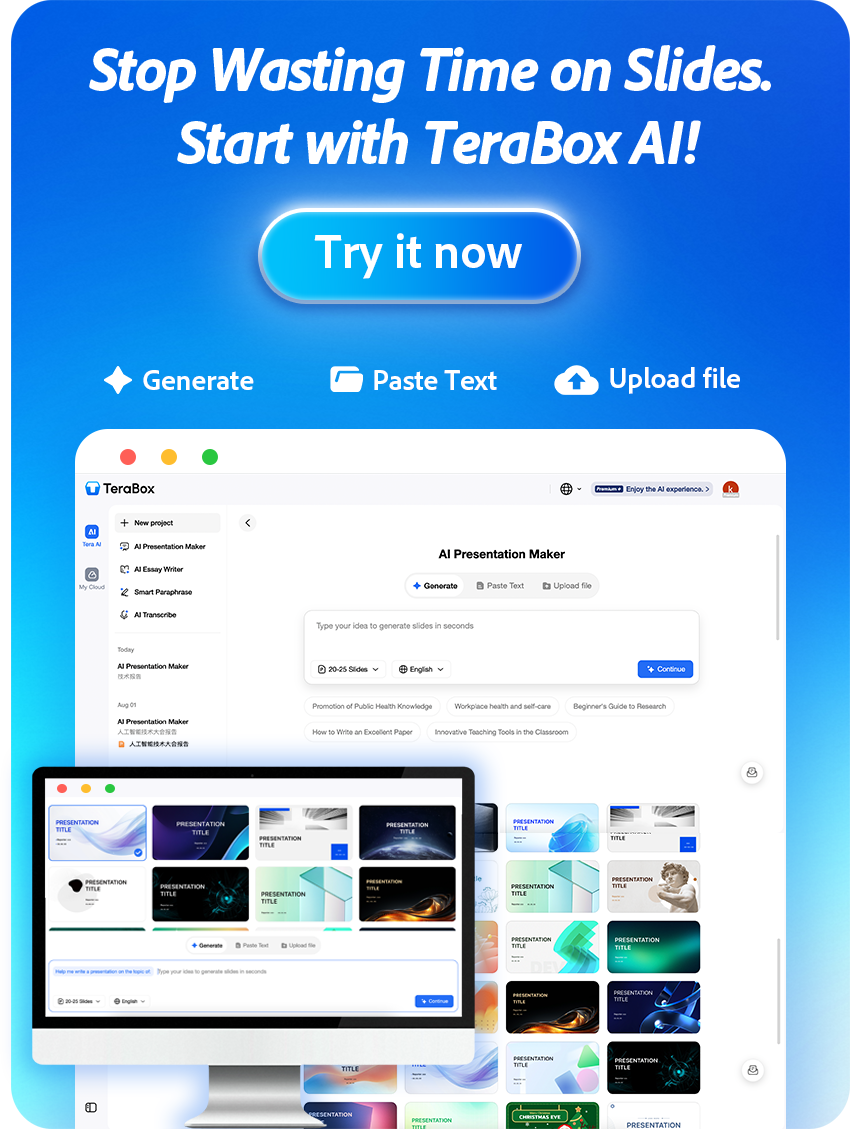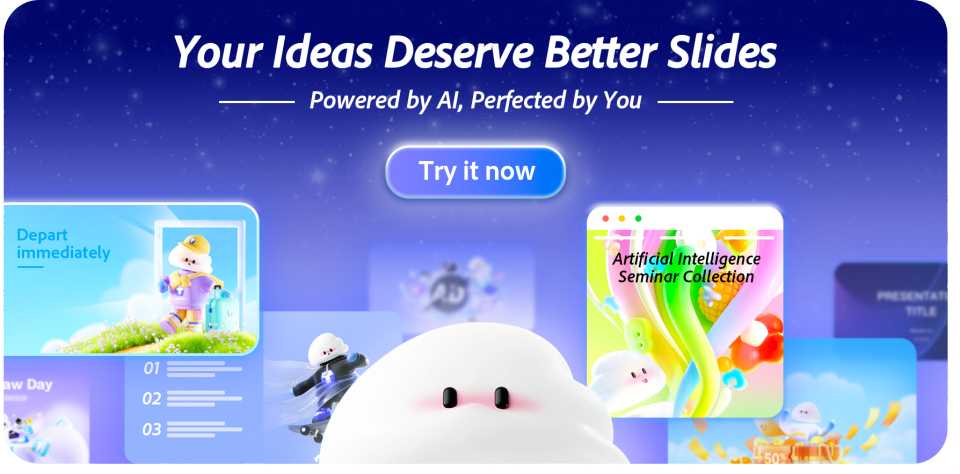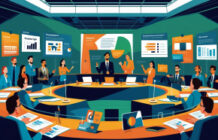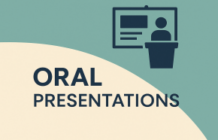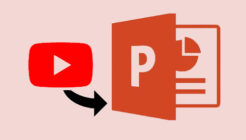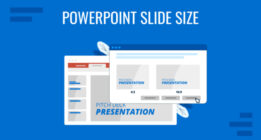Creative presentations are key to keeping your audience interested and making your message clear. To stand out, you need more than just basic slides—you should use design, visuals, and interactive elements that grab attention. The best creative presentation ideas combine visuals, storytelling, and audience engagement to make your content memorable and easy to follow.
Your goal is to deliver information in a way that feels fresh and appeals directly to your listeners. By using creative ideas, you make it easier for people to understand and act on your message.
What Makes a Presentation Creative?

Creativity in presentations is about more than just flashy visuals or unusual formats. It involves clear communication, engagement, and an approach that keeps your audience interested. Understanding what works and what doesn’t helps you build presentations that connect and impress.
Many people think creativity means using lots of colors, animations, or fancy designs. However, too much decoration can distract from your message. Creativity isn’t about overwhelming your audience with effects.
Creativity doesn’t require complex tools or software. You can create a powerful presentation with simple methods like storytelling, asking questions, or using images that relate directly to your topic. Besides, being creative doesn’t mean losing professionalism, either. It means presenting your ideas in a way that engages everyone while staying clear and respectful.
Key Elements of Creative Presentations
A creative presentation includes:
- Clear Structure: Your ideas must have a good flow. Logical progression helps the audience follow and remember your points.
- Visuals with Purpose: Use images, charts, or graphs that support your message. Avoid using visuals just to fill space.
- Audience Engagement: Ask questions, add interactive elements, or include stories relevant to your listeners. Engagement keeps interest high.
- Concise Content: Focus on important information. Avoid long blocks of text or unnecessary details that cause boredom.
- Authentic Delivery: Speak naturally. Your tone, pace, and body language build connection and make your content stand out.
By focusing on these, your presentation becomes creative because it is effective and meaningful, not just visually different.
12+ Creative Presentation Ideas
Using Engaging Visual Storytelling Skills
Your visuals need to do more than look good; they must support your message clearly and keep your audience focused. This means crafting slides that balance design, choosing the right images, and using motion carefully to guide viewers’ attention.
1. Designing Visually Appealing Slides
Start by keeping your slide layout clean and simple. Use plenty of white space to avoid clutter. Limit your color palette to three or four colors that complement each other. This helps create a professional and cohesive look.
Choose readable fonts in sizes that are easy to see from a distance. Use bold or italic styles sparingly to highlight key points. Avoid putting too much text on a single slide—stick to short sentences or bullet points.
Organize your information logically. Break down complex ideas into smaller parts and use charts or diagrams to explain data. Clear structure helps your audience follow your story without feeling overwhelmed.

2. Incorporating Effective Imagery
Pick images that relate directly to your message. Avoid generic or decorative pictures that don’t add meaning. Good images should clarify, support, or emphasize your points.
Use high-quality photos or graphics that look sharp on screens of all sizes. If possible, choose images that evoke an emotion or create interest. This draws people in and keeps them connected to your talk.
Infographics and simple icons can make numbers and concepts easier to understand. Place images strategically to balance your slide, making sure they don’t overshadow your text but work with it.
3. Using Animation and Transitions
Use animation to guide your audience’s focus one step at a time. For example, reveal bullet points as you talk about them instead of showing everything at once. This keeps attention where you want it.
Choose subtle transition effects, like fades or slides, to move between slides smoothly. Avoid flashy or distracting effects that can take attention away from your content.
Keep timing consistent. Make sure animations and transitions are quick enough to keep the flow natural but slow enough for viewers to follow. Overusing motion can confuse or annoy your audience, so use it wisely to support your story.
4. Using Live Drawing or Sketch Notes
If you’re comfortable with it, draw live during your presentation or use a whiteboard. Sketch out key points, diagrams, or ideas as you talk. This makes your message feel spontaneous and visual at the same time. You don’t need to be an artist—simple stick figures or flowcharts work great.
Live drawing feels personal and invites your audience to follow along as ideas unfold in real time.
5. Storyboarding Your Presentation Like a Movie
Think of your presentation as a short film. Create a storyboard before you design your slides—just like filmmakers do when they plan out scenes.
Sketch out the flow of your message using boxes for each key moment. Decide when to surprise, when to explain, and when to inspire. This helps make your story more dynamic and keeps your audience curious.
Each slide becomes a scene with a purpose. With this method, your presentation will feel less like a slideshow and more like an experience.
6. Minimalist Text
If you’re using text in your slides, keep it minimal. Limit each slide to 3-4 lines of text, with no more than 6 words per line. This keeps the audience from reading too much and allows them to focus on what you’re saying.
Short, punchy text also forces you to simplify your ideas and speak more clearly. This way, you won’t end up reading the slides verbatim, which can make your talk feel flat and unengaging.
7. Using Color Psychology
Colors can impact how your audience feels. Use colors strategically to reinforce the mood of your presentation. For example, blue conveys trust and calm, red can create urgency, and green is often associated with growth and harmony.
Keep your color palette simple, and make sure the colors are consistent with your brand or the message you’re delivering.
Interactive Presentation Formats
You can make your presentations more engaging by involving your audience directly. Using tools that encourage participation helps keep people interested and makes your message clearer.
8. Breaking the Ice with Humor
Humor, when used right, can instantly connect you with your audience. Start with a light joke or a funny anecdote to break the ice. This can make you seem more approachable and create a relaxed atmosphere.
Just make sure your humor aligns with your topic and audience. Avoid anything that could offend, and keep it light-hearted. A relevant joke or a funny image can also make your presentation more memorable.
9. Using Props or Physical Objects
Adding a physical item during your talk can make it more memorable. Props can help explain a concept, demonstrate a product, or just grab attention. Choose something meaningful and easy to understand. A well-placed object can spark curiosity and invite questions.
Don’t overdo it—keep the focus on your message. But the right prop at the right moment can make your idea stick.

10. Interactive Timelines for Historical Context
If your presentation includes historical data or events, using an interactive timeline (like TimelineJS or Tiki-Toki) can be an engaging way to illustrate how events unfolded over time. This allows your audience to explore different time periods in detail.
For instance, when discussing the growth of a company, the timeline lets you zoom in on significant milestones and visualize progress.
Tip: Highlight key events along the timeline to keep your audience’s attention on the most important moments.
11. Creating a Mini Workshop
Instead of just speaking, turn your presentation into a short hands-on session. Give your audience a small task, group discussion, or problem to solve.
Even a 5-minute activity boosts energy and focus. You can ask people to brainstorm ideas, reflect on a question, or apply what they just learned.
This format encourages learning by doing. It also makes your talk more practical and memorable.
12. Real-Time Audience Polls
Using real-time polls lets you gather instant feedback from your audience. You can ask questions during your presentation to check understanding or opinions.
Polls work best when you use short, clear questions and simple answer choices. Tools like Mentimeter or Slido help you create live polls that audience members can join from their phones or laptops.
This format not only breaks the monotony but also helps you adjust your talk based on audience reactions. It makes your presentation feel like a two-way conversation instead of a lecture.
13. Gamification Elements
Introducing game-like features can increase engagement by adding fun and competition. You can include quizzes, challenges, or timed activities linked to your topic.
Games keep your audience active and attentive. Consider small prizes or bragging rights to motivate participation.
Simple digital platforms offer built-in quiz functions you can use easily. Remember to keep games relevant to your subject matter to reinforce learning rather than distract.
Using gamification can also make group work more dynamic, encouraging teamwork and discussion.
14. Using Chatbots for Engagement
A chatbot is a great way to answer questions, collect feedback, or provide additional information during or after your presentation. Chatbots like ManyChat or MobileMonkey can be integrated into your website or social media platforms, allowing the audience to interact with it for further insights or resources.
For example, after your presentation, you can have a chatbot ready to answer questions about the product or service you’re discussing, guiding the audience to relevant resources or FAQs.
Tip: Customize your chatbot’s responses to suit your presentation content for a more seamless interaction.
Leveraging Technology for Creative Presentations

Using technology can make your presentations more engaging and clear. You can add immersive experiences, rich media, and interactive features to hold your audience’s attention and explain your ideas better.
15. Integrating Video and Multimedia
Adding videos, animations, and sound can help explain points that are hard to describe with words alone. Videos can demonstrate processes clearly or show real-world examples, while animations can simplify complicated data or concepts.
Use multimedia in short clips or loops to maintain interest without distracting from your message. Make sure videos are high quality and directly related to your topic. Adding background music or sound effects can enhance mood but keep volume low to avoid annoyance.
16. Incorporating Virtual Reality (VR)
If you’re presenting something complex, like a 3D model, virtual reality (VR) can offer a more hands-on experience. By using VR headsets or 360-degree videos, you can allow your audience to “step inside” your topic.
For example, if you’re presenting architectural designs or historical landmarks, VR lets people walk through spaces virtually, making the content more engaging and memorable. It’s a powerful tool for immersive storytelling.
Tip: If VR equipment isn’t available, use 360-degree videos or photos to provide a similar, immersive experience without the hardware.
17. Using Projection Mapping
Projection mapping allows you to project visuals onto non-flat surfaces, like walls, objects, or even people, to create a more immersive experience. For example, you can project dynamic visuals on a wall behind you to enhance your storytelling or illustrate your key points.
For instance, you could project animations or images related to your topic (like a globe spinning to show the global reach of your company), making the background as much a part of your presentation as the content.
Tip: You’ll need specialized software (like MadMapper or HeavyM) to create these effects, but it can be a showstopper when used correctly.
18. Utilizing AI Presentation Makers
Modern presentation tools like TeraBox 테라박스 AI, Prezi, and Canva offer many features to improve your slides. You can use dynamic transitions, embedded polls, or interactive quizzes to engage your audience during the talk.
Take advantage of their graphic design templates and drag-and-drop interfaces to make professional-looking slides quickly. Platforms like TeraBox AI PPT support online editing, helping you connect even in virtual settings. Use these features to create polished, audience-friendly presentations.

Storytelling and Narrative Approaches
Using storytelling in your presentations helps capture attention and makes your message easier to remember. You can create strong feelings, use comparisons to explain ideas, and organize your story to persuade your audience effectively.
19. Creating Mystery to Keep Attention
Another creative presentation skill is to keep your audience engaged is by creating a sense of mystery. Introduce a problem or question at the beginning, and only reveal the solution at the end of your presentation.
For example, “Have you ever wondered why most teams fail at collaboration? Let’s explore the surprising reason…” This builds curiosity and keeps people on the edge of their seats, waiting for the answer.
20. Building Emotional Connections
To engage your audience, you need to connect with their feelings. Share a relatable experience or challenge that your audience can understand. This makes your message feel personal and important.
Use simple, clear language to describe emotions. Showing vulnerability or honesty can build trust. Ask questions or include real-life examples to make your audience think and feel involved.
When you connect emotionally, your audience is more likely to pay attention and remember what you say. This connection also makes it easier for them to accept your ideas.
21. Using Personal Stories to Connect
One of the easiest ways to engage your audience is by sharing personal experiences, especially those that relate to the topic. People remember stories, especially when they’re emotional or relatable.
For example, if you’re talking about teamwork, share a story about a time you worked with a team—either a success or a failure. This helps make your message feel real and relatable.
Personal stories create an emotional connection and make you come across as genuine.
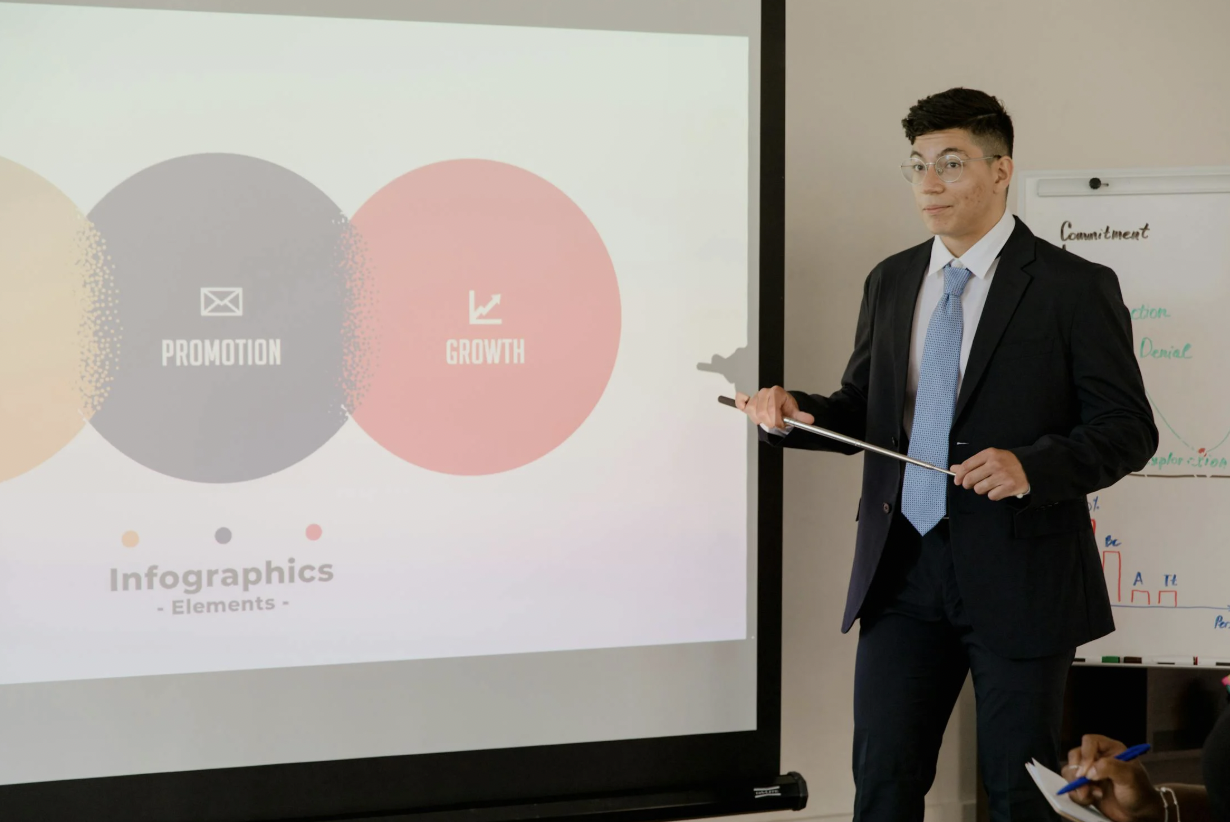
22. Using Metaphors and Analogies
Metaphors and analogies help explain complex ideas by linking them to familiar things. Choose comparisons that your audience already knows well.
For example, if you talk about teamwork, you might compare it to a sports team. This makes your point clearer without extra explanation.
Use metaphors to simplify information and to make your story more vivid. However, avoid overusing them, or your message might become confusing.
23. Pausing for Effect
Strategic pauses can make your points more impactful. When you’re about to say something important, pause for a few seconds to let the message sink in.
This not only builds anticipation but also helps you come across as confident and deliberate. Avoid speaking too fast or filling every moment with words. A well-timed pause lets your audience digest key ideas.
24. Structuring a Persuasive Narrative
A well-structured story guides your audience step by step toward your point. Start by describing the current situation or problem.
Next, show why change is needed by highlighting challenges or pain points. Then, present your solution or idea clearly.
Use a pattern like:
- What is: explain the current state
- What could be: describe a better future
This back-and-forth helps your audience see the value of your idea. End with a clear call to action or next step so they know what to do after your presentation.
Other Creative Presentation Ideas
You can make your presentation stand out by choosing unique locations and using spontaneous speaking skills. These methods help keep your audience alert and engaged.
25. Using the Rule of Three
People tend to remember things in threes. When presenting multiple points, try to limit them to three main ideas. For example, “There are three key factors to consider when starting a new business: market research, funding, and team development.”
This structure helps your audience process the information more easily, and it gives your presentation a nice, tidy rhythm.
26. Unconventional Presentation Settings
Presenting outside a usual conference room can change how your audience reacts. Consider settings like outdoor spaces, cafes, or even walking tours.
Using these locations adds interest and helps connect your message to real-world contexts. For example, if you talk about nature conservation, presenting in a park makes your points feel more relevant.
Make sure the space fits your audience size and has necessary equipment like microphones or projectors. You should also think about noise and weather if outdoors.
Try to arrange seating so everyone sees and hears clearly. Changing your location shows you can be flexible and creative.
27. Improvisational Techniques
Improvisation means speaking naturally without a strict script. This keeps your talk fresh and helps you respond to audience reactions.
You can prepare key points and speak around them, rather than memorizing every word. This makes you sound more genuine and confident.
Use techniques like asking the audience questions or adding short stories to make your points clearer. If a technical issue happens, improvise by telling a relevant anecdote or moving to a discussion.
Practicing active listening during your talk helps you adapt and keep the flow. Improvising takes practice but improves how you connect with your listeners.
28. Reversing the Usual Structure
Most presentations go from introduction to problem to solution. Try flipping that. Start with the solution, then explain how you got there.
This method works well when your audience already knows the topic and wants results fast. It builds intrigue: “Here’s the answer. Now let me show you the journey.”
Reversing your structure keeps your presentation fresh and surprising.
29. Highlighting Mistakes and Lessons Learned
Don’t just talk about what went well. Share a time you made a mistake, what went wrong, and what you learned from it. Being honest about failure builds trust and shows growth. It makes your message feel human and real.
Audiences respect vulnerability, especially when you turn it into a learning moment they can apply themselves.
30. Live Social Media Integration
You can display live social media feeds (Twitter, Instagram, etc.) during your presentation to show what people are saying about your topic. Use Tagboard or Tweetwall to aggregate and display live posts or tweets that are relevant to your presentation.
This is a great way to keep your presentation current, as well as show how your ideas are being received by the public.
Tip: Set up a specific hashtag for your presentation so that people can easily interact with it online.
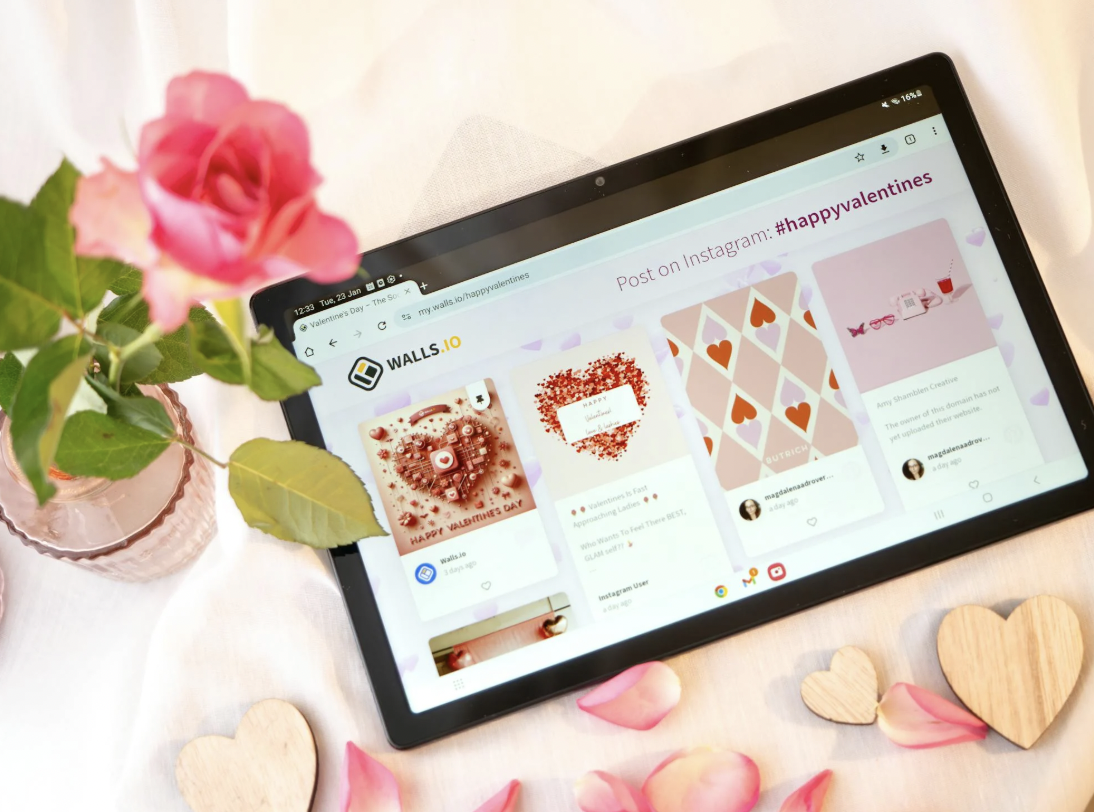
31. Ending with a Strong Call to Action
End your presentation with a clear and strong call to action. Tell your audience what they should do next. Whether it’s signing up for something, trying out your solution, or just reflecting on what they’ve learned—make sure it’s actionable.
A strong conclusion leaves a lasting impression and gives your audience a clear next step to take.
Measuring Presentation Effectiveness
To know if your presentation worked, you need to measure its success. Start by observing your audience during the talk. Notice if they make eye contact, ask questions, or actively participate. These are signs they are engaged and interested.
After your presentation, use surveys to gather feedback. Ask your audience about their satisfaction and if they found your message clear. Surveys help you understand what worked and what needs improvement.
You can also track specific goals using key performance indicators (KPIs). For example, if your goal is to inspire action, measure how many attendees follow up or implement your ideas.
Here are some ways to measure effectiveness:
| Method | What to Look For | Why It Matters |
| Audience Behavior | Eye contact, questions, participation | Shows engagement |
| Post-Talk Surveys | Satisfaction ratings, clarity, helpfulness | Direct feedback on your message |
| KPIs | Follow-up actions, results after presentation | Shows real impact and value |
Using these steps will give you practical insight into how well your presentation connects with your audience. It helps you improve and deliver your message with more impact next time.
Conclusion
Using creative ideas in your presentation helps keep your audience interested and makes your message stronger. You can add visuals, tell stories, or involve your audience to make your points clearer. Don’t forget to plan how you want to finish—it leaves a lasting impression.
You can also add contact info or links to support further connection with your audience after your talk.
If you want an easy way to save and share your creative work, try TeraBox. It offers secure cloud storage with plenty of space. This can help you keep your presentation files safe and accessible anytime.
Incorporating these ideas can make your presentations more memorable and effective. You hold the tools to make your message clear and engaging.
FAQs
What are some easy ways to make my presentation more creative?
You can add visuals like photos, videos, or infographics. Using stories that relate to your topic can also keep your audience interested.
How can I keep my audience engaged throughout the presentation?
Try asking questions or including interactive elements like polls or quizzes. Changing your delivery style and using clear, simple slides helps too.
Is it better to use a lot of text or images on my slides?
Use fewer words and more images. Slides should support what you say, not replace it.
What tools can help me create creative presentations?
You can use PowerPoint, but also explore tools like TeraBox AI presentation maker, Figma or online platforms that offer templates and design tips.
How do I make sure my presentation fits the time limit?
Plan your main points first. Practice so you can speak clearly without rushing, and cut any extra details that don’t add value.
Can storytelling really improve my presentation?
Yes. Stories make information easier to remember and help connect with your audience emotionally.
Should I use animations and sounds in my presentation?
It’s one of the creative presentation ideas, but you should use them sparingly. Simple animations can highlight key points, but too many can distract your audience.
